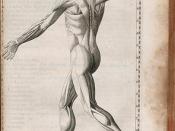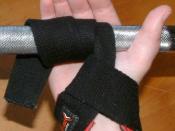Introduction
We all know that some parts of the male and female body are different. So do we all know that men and women react and respond differently to changes in their body? Some people do, but most of us don't. One specific change people can make for their bodies is to increase their muscle mass. In order to increase muscle mass, people need to strength train. The procedure that the muscles perform to increase its size by strength training is the same in both men and women. The components of muscle in the male and female body are the same. Although the effect on the rest of the body from increasing muscle mass can be different. Not all the effects are different, some are the same, but the different effects will alter male and female bodies differently. Today, I will answer the question of what the effects of strength training are on the female body; explaining both the positive effects and negative effects on females.
Before I get started I will give a brief explanation of how muscles function, or the physiology of strength development, so we can better understand these effects.
Physiology of Strength Development
Before a muscle can move or contract for strength training, events inside the muscle must occur. First, thick protein strands called myosin filaments, and thin protein strands called actin filaments, work together in a process called the sliding filament theory. Within this theory small projections called cross-bridges extend from the myosin filaments to connect with the surrounding actin filaments. These filaments are arranged in a functional contractile unit known as a sarcomere. Adjacent sarcomeres form myofibrils, which are the principal threads running throughout our muscles. Groups of myofibrils are bound together by a membrane called sarcolemma to form individual muscle fibers. Muscle fibers,


